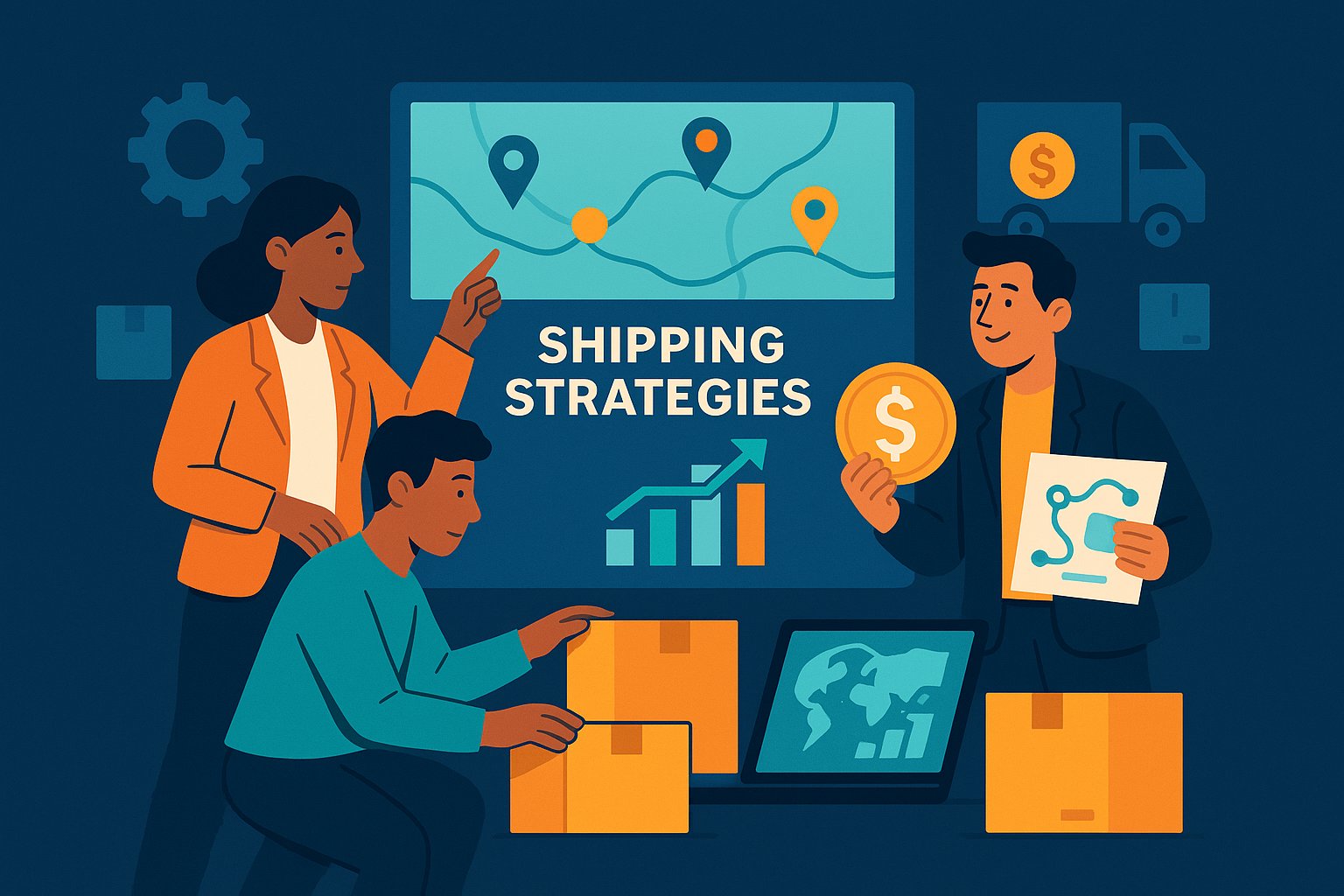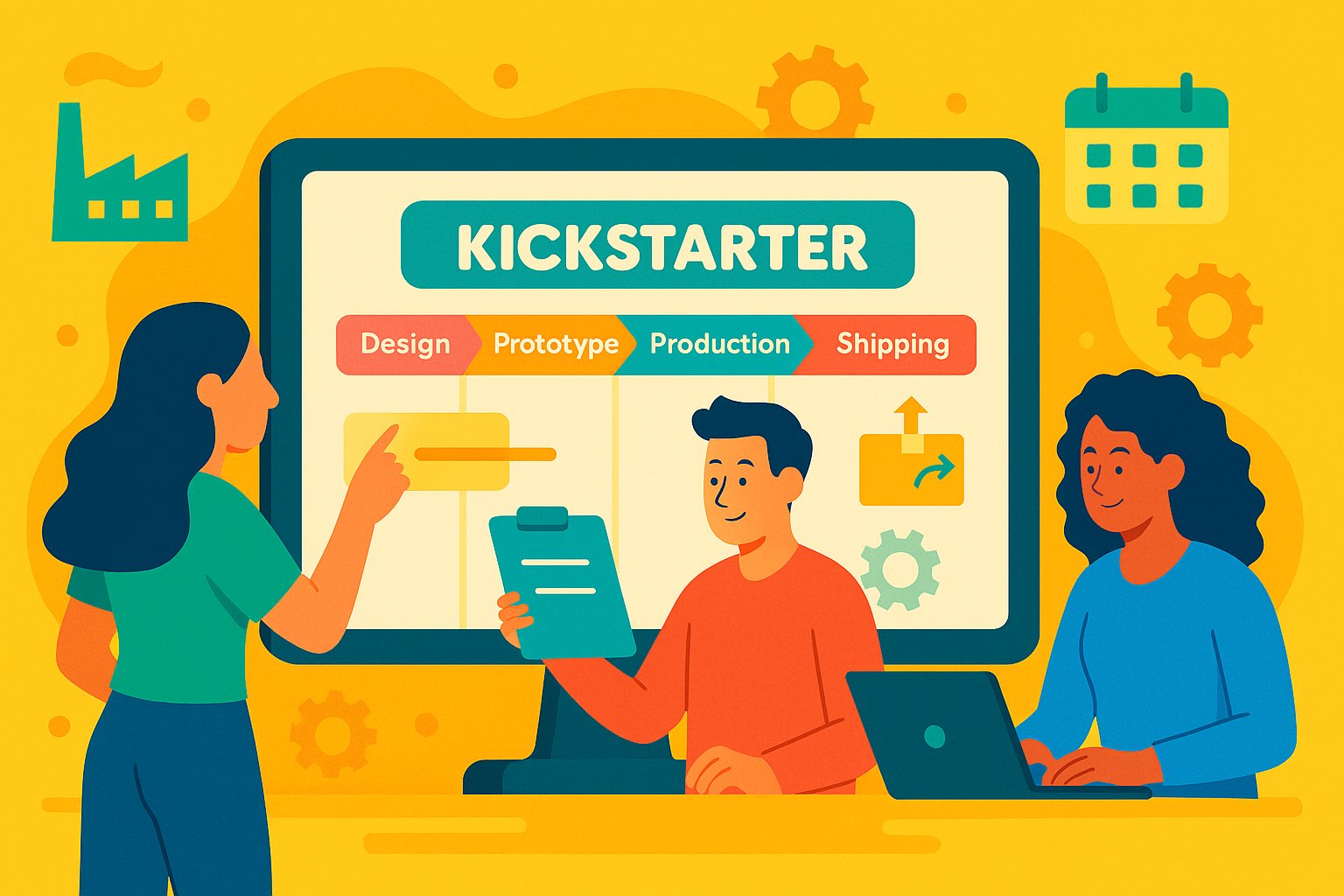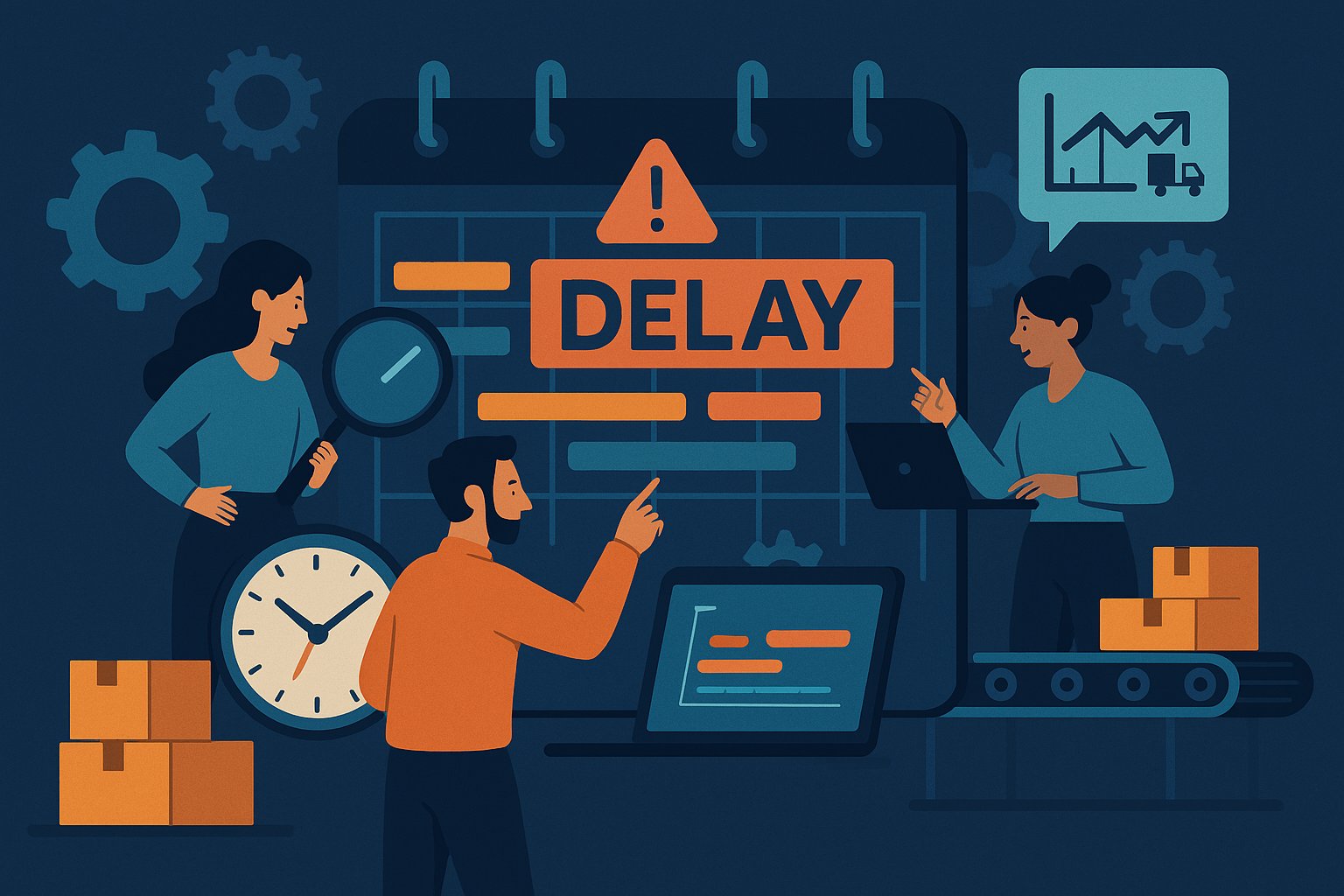Navigating the Shipping Maze: The Power of a Strategic Approach
Shipping fulfills the promise you make to your backers: that the reward they eagerly anticipated will arrive safely, affordably, and on time. In the world of reward-based projects, mastering shipping strategies is as crucial as designing the product itself. Inefficient shipping can quickly erode goodwill, inflate budgets, and trigger angry backer messages. Conversely, a thoughtful approach to logistics can greatly reduce costs, streamline operations, and exceed delivery expectations. In this article, we will explore cutting-edge shipping strategies that not only keep expenses in check but also delight supporters by delivering a seamless, transparent experience. By integrating cost-effective tactics and open communication into your shipping plan, you fortify trust and cultivate a community that stands by your brand long after the campaign ends.
Mapping Your Backer Landscape for Maximum Efficiency
Identifying where your backers reside is the cornerstone of any cost-saving shipping strategy. When you break down your pledge data by region—domestic, North America, Europe, Asia-Pacific, and Rest of World—you uncover patterns that guide logistical decisions. For instance, if a significant portion of backers is clustered in a handful of regions, establishing localized shipping hubs or partnering with regional fulfillment centers can dramatically slash transit times and fees. Instead of dispatching every order from a single central warehouse, divide shipments into regional batches. By doing so, you take advantage of bulk shipping rates for large zones and minimize the number of cross-border postage transactions. When you know that 40 percent of your supporters are based in Europe, for example, it’s more cost-effective to send a large pallet to a European fulfillment center and have that hub handle final-mile deliveries. This strategic segmentation ensures that you’re not paying excessive international rates when a domestic courier could cover nearby orders more affordably.
Optimizing Packaging: Weight, Dimensional Considerations, and Branding
Packaging often accounts for the lion’s share of shipping costs, especially when dimensional weight pricing comes into play. Carriers charge based on the greater of actual weight or dimensional weight, which factors in package volume. To minimize these charges, incorporate packaging optimization into your product development process. Choose the smallest protective packaging that still offers adequate cushion and protection. Instead of a generic box, consider custom corrugated designs that fit snugly around your product, reducing dead airspace. Lighter materials—such as recyclable foam pouches or biodegradable air pillows—can also trim weight without compromising safety. Additionally, packaging design presents an opportunity to reinforce your brand: a cleverly branded exterior or a personalized note inside can enhance unboxing excitement without substantially increasing dimensions. When designing packaging, always test prototype shipments across various carrier services to measure actual versus dimensional weight costs; this hands-on approach reveals hidden savings and prevents unpleasant last-minute surprises.
Strategic Carrier Relationships: Negotiating Rates and Services
Not all shipping partners are created equal. Building strong relationships with multiple carriers—USPS, UPS, FedEx, DHL, and local courier services—unlocks opportunities to negotiate volume-based discounts and access specialized services. When you consolidate monthly shipping volumes, carriers are more likely to offer tiered pricing that aligns with your forecasted parcel counts. Initiate discussions well before your release date: share your anticipated shipment schedule and request multiple rate quotes for each major region. Be transparent about projected peaks, such as holiday surges or limited-edition reward drops, so carriers can plan capacity accordingly. Furthermore, consider a hybrid shipping model: use USPS for lightweight, low-value packages and reserve UPS or FedEx Ground for heavier or higher-value items. For international shipments, negotiate door-to-door rates that include customs clearance to mitigate hidden surcharges. By nurturing carrier partnerships, you position yourself to renegotiate rates as your brand grows, ensuring that cost savings compound over each subsequent campaign.
Embracing Fulfillment Centers: From DIY to Turnkey Solutions
For many first-time creators, managing in-house shipping seems straightforward until the floodgates open with hundreds or thousands of orders. At this stage, partnering with a fulfillment center transitions the entire shipping burden to a specialized team born for scale. A reputable fulfillment provider offers bulk discounts on shipping rates, inventory management, and automated order processing integrations with your campaign platform. They can handle everything from receiving your product inventory and pick-and-pack operations to final-mile delivery with live tracking. While there is a fee for these services—usually a per-item rate plus monthly storage costs—the economies of scale often outweigh the expense. Fulfillment centers can negotiate lower carrier rates based on aggregate monthly volumes, passing those savings back to you. Additionally, if you have multiple product SKUs or reward tiers, a fulfillment partner can configure warehouse bins, streamline pick-and-pack workflows, and generate optimized shipping labels without manual intervention. As a result, your team regains precious time to focus on next-level marketing and community engagement.
Leveraging Batch Shipping Windows and Peak Discounts
Timing your shipments to align with carrier discount windows can yield transformative cost reductions. Many carriers, including UPS and FedEx, offer off-peak or batched shipping programs that reward volume and schedule consistency. By committing to daily or weekly pickup times, you may qualify for negotiated “day-old” or “bulk” rates that undercut standard priority pricing. For example, scheduling a weekly pallet pickup for domestic orders can reduce rates by up to 15 percent compared to on-demand pickups. Similarly, shipping carriers often provide promotional discounts during slower seasons, such as early fall or late winter. By grouping shipments and aligning them with these promotional periods, you minimize exposure to rate fluctuations. Coordinate closely with your fulfillment partner or in-house logistics team to identify these windows in your shipping calendar. Even if a batch shipping window adds an extra one- or two-day delay, backers usually appreciate the transparent cost-savings effort, especially if you include that explanation in a pre-shipment communication. This strategy is a win–win: you benefit from lower expenses, and backers receive timely updates on when to expect their packages.
Mastering International Complexities: Duties, Taxes, and Customs
Expanding your reach to global backers is a cornerstone of crowdfunding success, but international shipments carry unique cost and compliance challenges. A fundamental decision is whether to ship Duty Delivered Paid (DDP) or Duty Delivered Unpaid (DDU). With DDP, you cover all applicable VAT, GST, and customs duties upfront, providing backers with a seamless experience free of additional charges upon delivery. However, calculating accurate landed costs requires meticulous collaboration with carriers: you need precise commodity codes, declared values, and a reliable estimate of tariffs per destination. Conversely, DDU shifts the tax burden to backers, which can lead to confusion, rejected packages, or surprise bills that sour goodwill. If you opt for DDP, ensure your pricing strategy accounts for the maximum possible duties in your top target markets; overestimating rather than undercounting avoids unpleasant backer surprises. Partner with an experienced freight forwarder who can process customs documentation, minimize delays at ports, and reassure backers that their rewards will clear customs without hiccups. By proactively managing duties and taxes, you fortify trust across borders.
Transparent Communication: Setting Expectations and Managing Surprises
Even the most finely tuned shipping plan is vulnerable to external factors: severe weather, carrier network congestions, or geopolitical events can wreak havoc on delivery timelines. When delays happen, transparent, regular communication with backers is indispensable. Craft a communication schedule that aligns with your shipping milestones: an initial “Shipping Window Announcement” when your batch leaves the warehouse, followed by “Tracking Notification” emails as each parcel hits the carrier, and “Delivery Confirmation” updates once packages scan as delivered. In cases of unpredictable delays—such as a temporary postal strike in a key region—immediately send a targeted update explaining the situation, your contingency action plan, and a revised estimate. Backers are far more understanding when they receive timely explanations rather than puzzling silence. Consider setting up a dedicated shipping FAQ page, updated as new information emerges, to answer common queries about transit times, customs status, or address corrections. Through proactive and candid communication, you convert potential frustration into a demonstration of your unwavering commitment to transparency and backer care.
Harnessing Technology: Automated Labeling, Tracking, and Analytics
Transforming your shipping operations from manual bottlenecks into a streamlined machine requires the right technology stack. Integrated shipping platforms—such as ShipStation, EasyShip, or Pirate Ship—can automatically import order data from your crowdfunding platform, apply the best carrier rates in real time, and batch-print address labels with barcodes for rapid scanning. These solutions also provide backer-facing tracking portals, where supporters can monitor their package’s journey without contacting your support team. When a shipment crosses multiple carrier networks—say, a drone delivery for the final mile—your tracking dashboard aggregates all scan events into a single timeline, simplifying troubleshooting. Moreover, leverage analytics to identify high-cost shipping corridors or parcel weight outliers. If you observe that packages bound for certain ZIP codes consistently incur surcharges, consider rerouting through alternate carriers or adjusting your shipping zones. By automating labeling, tracking, and analytics, you reduce manual errors, cut operational overhead, and make data-driven decisions that fine-tune your shipping strategy for continuous improvement.
Cultivating Backer Loyalty: Exceeding Expectations Through Value-Added Services
Competitive shipping strategies do more than just cut costs; they add tangible value to the backer experience. Consider including simple add-ons like branded packing tape or a surprise sticker sheet inside the package, reinforcing your project’s identity and creating a memorable unboxing moment. For higher-tier backers, you might offer expedited shipping options at a modest additional fee, guaranteeing delivery within a stricter window. If a limited edition variant includes a personalized thank-you card, ensure it is hand-signed by a team member before the package is sealed. Another approach is to provide digital tracking updates that allow backers to choose their preferred communication channel—email, SMS, or in-app notifications—tailoring the experience to individual preferences. By going above and beyond with small, thoughtful touches, you demonstrate that you value backers not merely as customers but as partners in your creative journey. When supporters see that their premium backing comes with exceptional shipping care, they become more likely to champion your campaign to friends and family, amplifying your reach organically.
Final Mile Excellence: Overcoming Last-Leg Obstacles
The “last mile” — the distance between a local distribution hub and a backer’s doorstep — frequently presents the greatest challenge in shipping. In some rural or hard-to-reach regions, carriers may lack frequent pickups or reliable routes, leading to extended delays or multiple misdelivery attempts. To counteract these pitfalls, identify local carrier partners who specialize in cartage or regional delivery. Some fulfillment centers maintain curated carrier agreements that automatically reroute problematic zones to local couriers at lower costs than national carriers. In remote areas, offering a “local pickup” alternative—where backers collect rewards at a nearby retail partner or sponsored event—can sidestep unreliable postal networks entirely. If a backer’s address is flagged as “high risk” due to historical delivery issues, reach out proactively to verify the exact location and advise them on options. By paying attention to final-mile intricacies and devising creative solutions, you ensure that every backer, no matter how remote, receives their reward on schedule and in good condition.
Continuous Improvement: Measuring Success and Iterating for Future Campaigns
A truly data-driven shipping strategy doesn’t end when the last envelope departs; it evolves through rigorous analysis and iteration. Track key performance indicators such as average shipping cost per package, on-time delivery percentage by region, customer satisfaction ratings related to shipping, and return-to-sender rates. Compare these metrics against your initial projections to pinpoint areas for refinement. Did you underestimate dimensional weight costs for a particular reward tier? Did a surge in last-minute backers for international premiums overwhelm your carrier discounts? Document each lesson learned and incorporate them into your next campaign’s shipping blueprint. When you consistently refine your shipping playbook, you reduce expenses over time and cultivate a reputation for punctual, reliable delivery. Backers who experience flawless shipping become ambassadors who confidently promote your projects, knowing that not only is the product exceptional, but the entire fulfillment journey is engineered for excellence.
Winning with Balance: Cost Reduction Meets Backer Satisfaction
Crafting shipping strategies that simultaneously reduce costs and meet—or even exceed—backer expectations is a nuanced art. It requires a deep understanding of your backer demographics, shrewd carrier negotiations, packaging optimization, and transparent, empathetic communication. By leveraging regional fulfillment centers, embracing automated technology, and planning for last-mile complexities, you create a logistics ecosystem that operates leanly while delivering a premium experience. Remember that each dollar saved on shipping can be redirected into product enhancements or marketing efforts, creating a virtuous cycle of growth and brand loyalty. Above all, view shipping not as a burdensome expense but as an integral part of your brand promise. When backers know they can trust you to deliver on time—even in challenging circumstances—they invest not just in a single product but in your long-term vision. With the right combination of cost-effective tactics and backer-centric practices, your reward-based project will stand out as a beacon of reliability in a crowdfunding landscape crowded with uncertainty.




